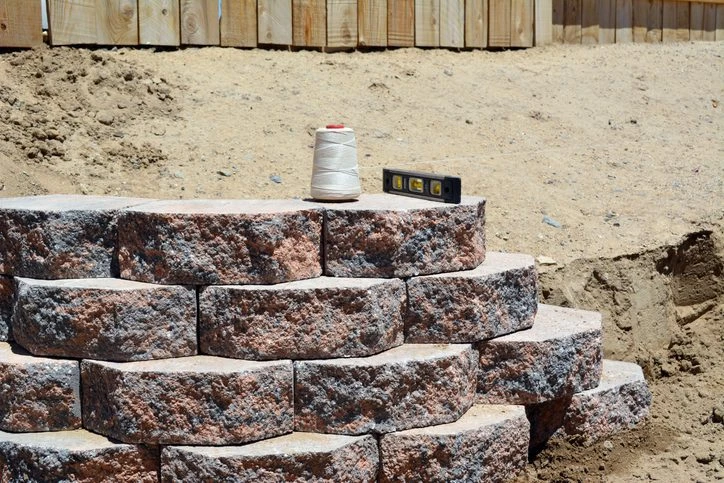As a home or business owner, you might have started to notice that the beautiful retaining wall you had installed on your property recently is already starting to tilt, sink, crack, or bulge. This is not normal and is a sign that your retaining wall is failing. This could be for one of many reasons, but to avoid future retaining wall mistakes, here are some things you should know about retaining wall contractors and retaining wall failure.

What Happens When a Retaining Wall Fails?
There are a host of unpleasant scenarios and consequences of retaining wall failure. These failures can have drastic effects on your landscape and even your house or office.
For example, if your retaining wall was installed to prevent dirt erosion, the failure of the wall could result in a landslide in your yard — yeah, not a pleasant scenario.
A retaining wall failure could also result in a flooded landscape if the wall was installed to combat drainage issues that you have in your yard.
Both of these retaining wall failure scenarios can result in a lot of hassle for homeowners as well as damage to their property. This is why it’s essential to have a reliable landscaping team come and fix failing retaining walls to avoid further damage.
Retaining Wall Causes of Failure
But why did my retaining wall fail in the first place? Answering this question will ensure that mistakes are not repeated during the repair of your current, failing wall. To help you identify the flaw in your wall’s design, here are three of the most common reasons why retaining walls fail.
Top 3 Reasons Why Retaining Walls Fail
The building and installation process is where a lot of landscapers go wrong. If certain mistakes are made, the resulting retaining wall will almost certainly fail.
- Retaining Wall Mistake #1: Putting vertical joints in your retaining wall. This creates weak points in your retaining wall making it more likely to shift, lean, and eventually fail.
- Retaining Wall Mistake #2: Failing to complete the appropriate soil correction. While many homeowners would like to use the soil already on their property, it might not be the right balance (it could be too wet) and so using this soil could result in a less stable retaining wall that is more likely to fail.
- Retaining Wall Mistake #3: Failing to use enough draining aggregate or gravel. Often, the primary motivation for having a retaining wall installed is to solve drainage issues. So when landscaping companies skimp on gravel or other drainage promoting material, you could face drainage issues. As a general rule, most retaining wall contractors use at least 12 inches of aggregate when building a retaining wall.
It’s important to remember that even professionals can make these mistakes. To help mitigate the possibility of retaining wall problems in the future, ask your contractor about these three issues, and make sure that they are considering these possible mistakes during construction.
Contact a Reliable Retaining Wall Installation Company Today
Here at New Life Rockeries, our team of retaining wall installation experts are ready to help repair problematic retaining walls on your property. With decades of experience and a robust track record, our professionals know how to repair and build walls that stand the test of time.
If you would like to schedule a date to have our retaining wall crew visit your home or if you have any questions about our retaining wall services, contact New Life Rockeries today.

